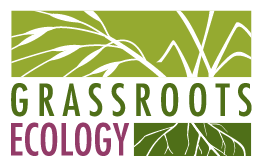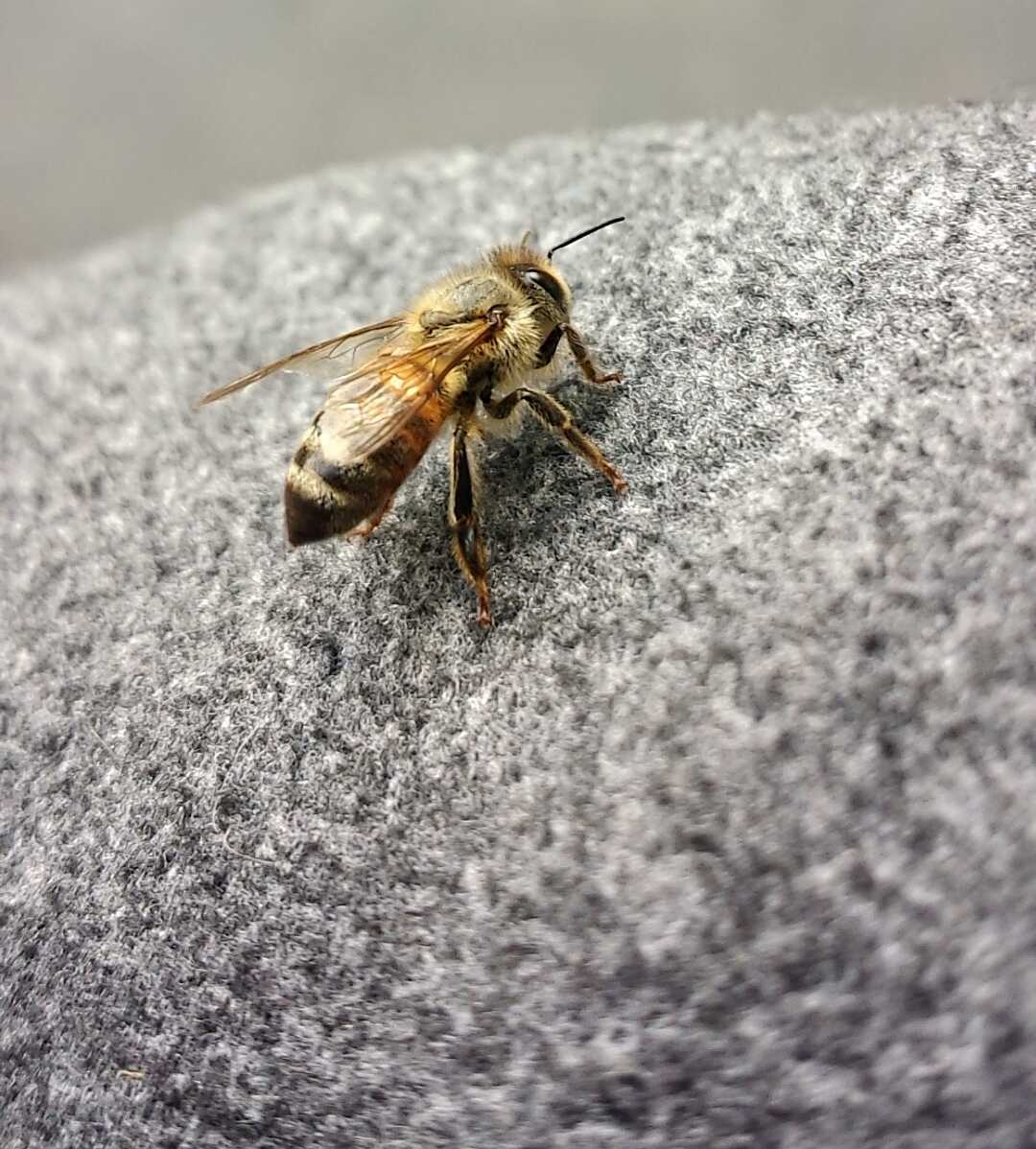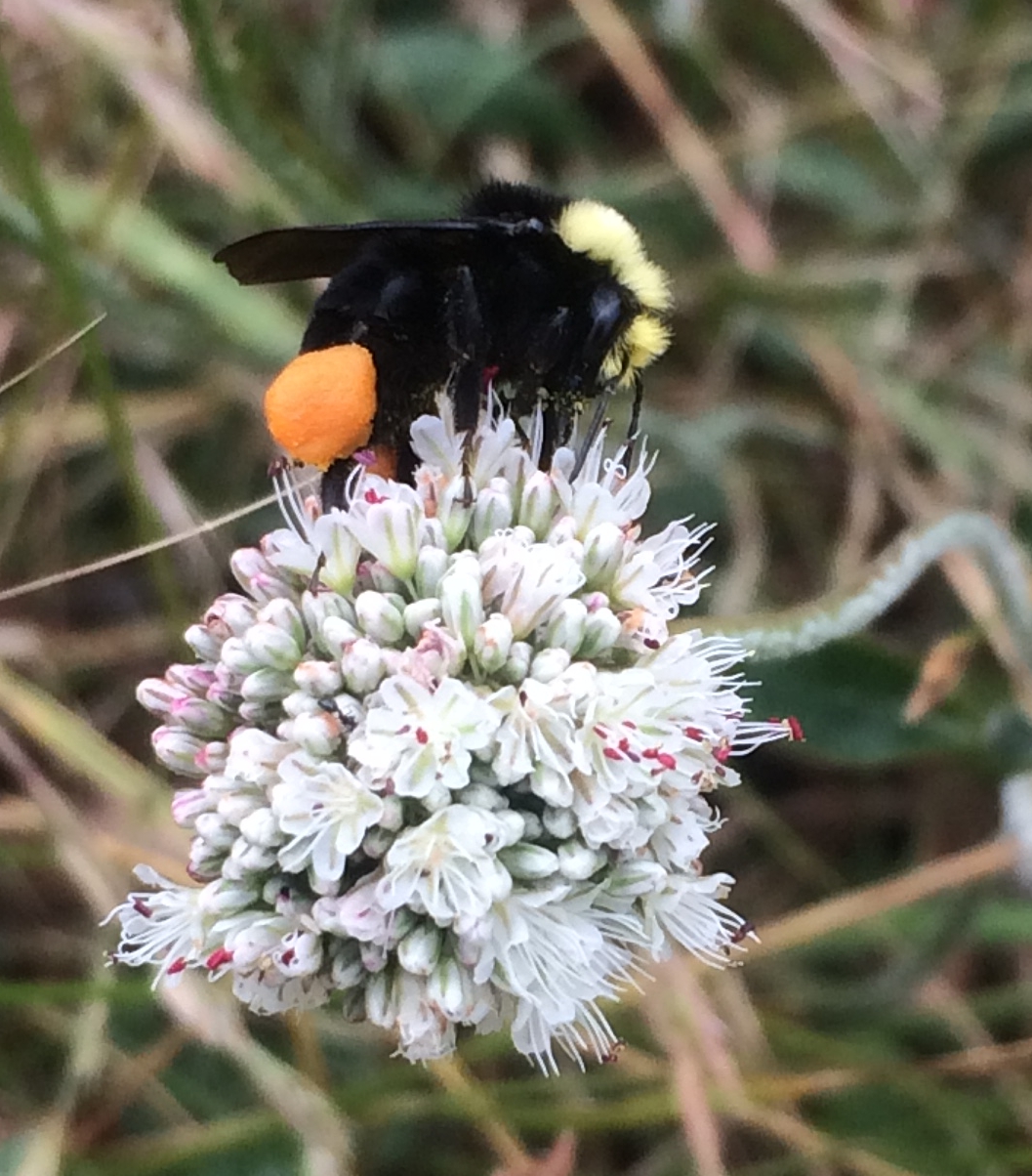Flight of the Bumble Bee, Plight of the Native Bee
By Alisa Kim, Restoration Specialist
While weeding invasive plants or gently watering natives with our volunteers, I often talk about how what we are doing creates habitat for a variety of animals. Many are quick to think of deer, coyotes, or bobcats before they think of insects. But insects are an important piece of the food chain that we focus on through our restoration work.
One such insect is the bee. Bees invoke a broad spectrum of feelings: horror, fear, awe, adoration, or perhaps a combination of these. Yet, what if I told you most of these feelings are elicited by one species of bee out of roughly 400 different bee species in the Bay Area and about 1,600 in the state of California?
Let that sink in for a second. There are roughly 400 different bee species in the Bay Area alone.
Many people think of the European honey bee (Apis mellifera) when they imagine a bee. Almost everything people assume about bees are characteristics of honey bees: social animals that live in hives, make honey, readily and painfully sting, and die after stinging. These bees are not originally from California, as the name indicates. Brought from Europe to assist with large agricultural endeavors, they have become the poster child for insect conservation.
Although honey bee conservation is important as well, when managing open spaces for healthy ecosystems, we try to focus on conservation of native bees because they have special powers (i.e. local adaptations) that honey bees do not have. Native bees provide many animals, including birds, with a protein-packed source of food. The vibrations from their strong wings are able to knock off pollen from long flower tubes that honey bees cannot reach. Most are solitary animals, meaning they live on their own and do not live with other bees, nor do they make honey for us to eat. Many have evolved with specific types of flowers found in certain regions of California, which makes them the best at pollinating exactly that plant. Some flowers can only be pollinated by native bees, thus the future of these plants hinge upon these insects.
European honey bee, left, native bumble bee, right.
Now that we have uncovered the secret lives of these native bees, we have to also rethink what it means to help and conserve bees. A lot of the things negatively impacting honey bees affect native bees tenfold: mites, habitat degradation and loss, diseases, pesticides with neonicotinoids, and so forth. A few things that are causing honey bee declines don’t generally affect native bees, such as colony collapse disorder. Regardless, it is clear that native bees populations are suffering, and potentially more so, than honey bee populations are. This all sounds bad, right?
How does habitat restoration fit in? Where do we fit in?
Something high on that list of threats to bee populations is a lack of habitat for native bees. Many native bees are cavity nesters. They will dig holes in the ground, find holes in decaying wood, and some can even drill holes into the wood of living trees. Providing homes for bees is imperative in a time where our landscapes are increasingly covered with concrete and asphalt and divided by roads. Conservation of open spaces is important to provide ground for bees to dig holes in. While we do mulch in some areas, avoiding thick mulch while leaving a light layer of leaves and other debris on the floor provides bees access to the ground while leaving some ground cover so they can move in stealth. Another easy way to provide more bee homes in yards and open spaces is by putting up bee boxes, which gives wood-nesters a great already-furnished home. These can be made at home with a few simple supplies or purchased already constructed. Affixing the bee boxes on something sturdy, like a tree or pole, and positioning them on south-facing slopes will invite bees to their new abode.
A homemade bee box made by Eagle Scout Brian Ho.
Another benefit we provide when we remove invasive plants and plant natives is increased food resources for native bees. Although it seems counterintuitive to hack away at flowering plants to increase food for bees, when invasive plants cover a field, they all flower and then die at the same time. This makes it so that the bees only have access to pollen and nectar for a few weeks to a month during the entire stretch of summer. They then have to travel further and further to find food at other times when that one plant isn’t flowering. By keeping invasive plant numbers under control and supporting native plant establishment, we support a diversity of plants that flower at different times, ensuring there is a source of food for bees all summer long. This diversity also supports the “picky eaters”, those that specialize in pollinating one type of flower.
Lastly, while it might seem insignificant, raising awareness is huge. Having conversations to explain the differences between honey bees and native bees dispels fear and incites curiosity and appreciation. I try to share what I know about native bees with everyone around me. After all, if people only know about the plight of the honey bee, those will be the only bees people think are worth saving. Heightened awareness and small modifications in land management allow us to improve the plight of the native bee in powerful ways!



